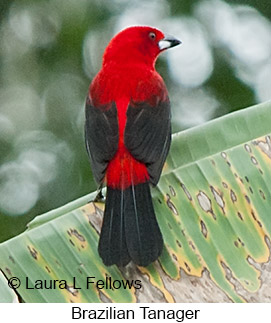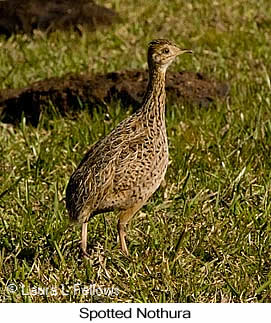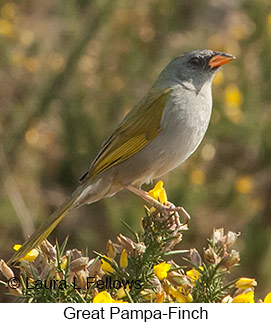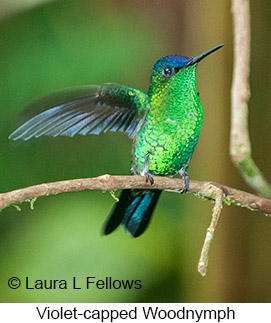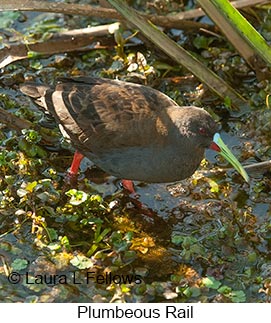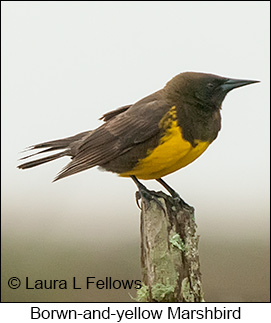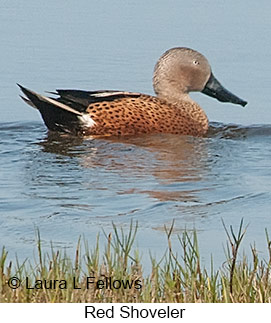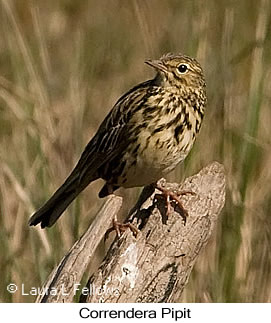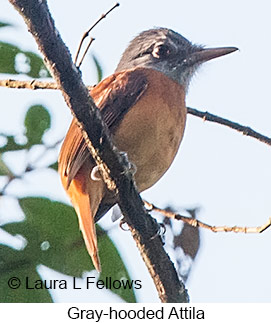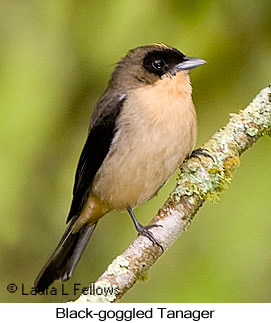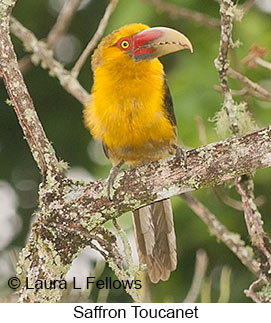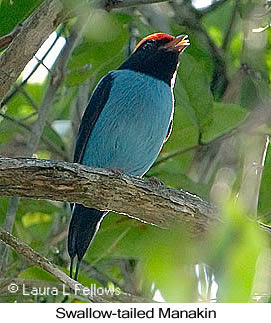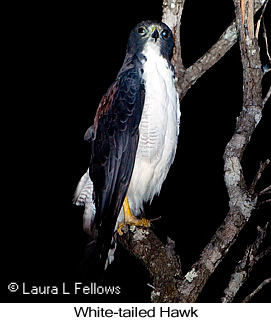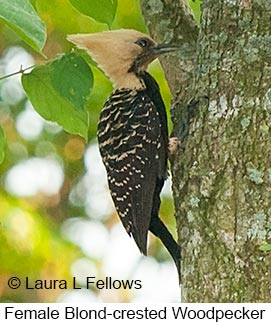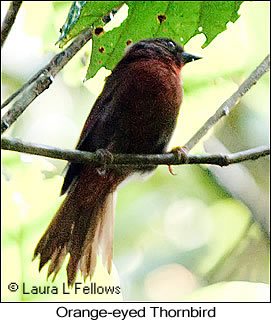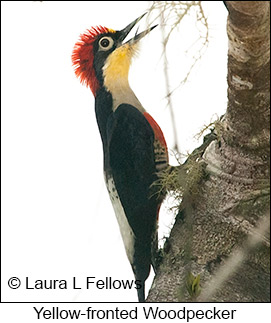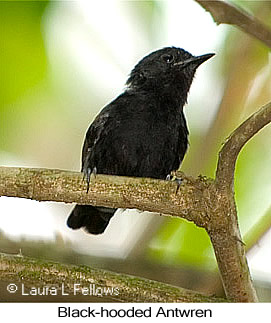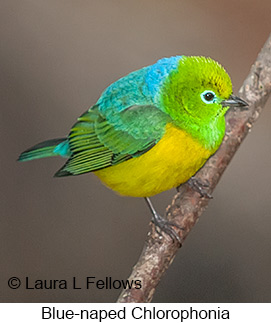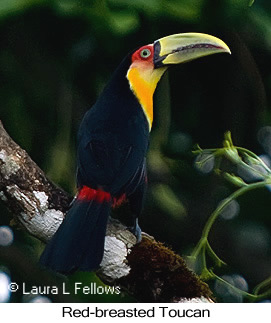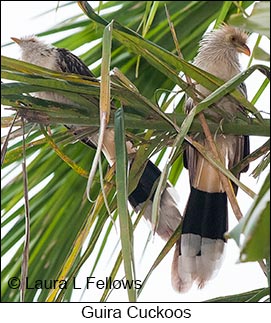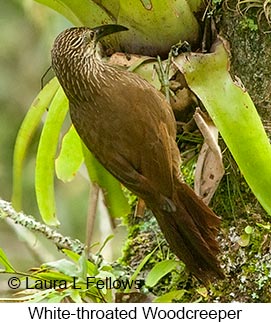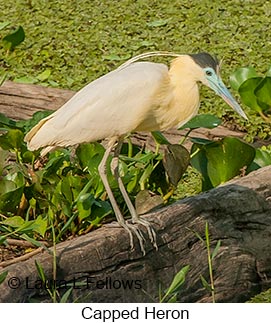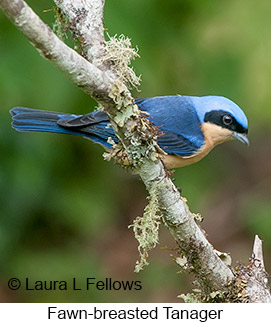BRAZIL BIRDING TRIP REPORT

TRIP REPORT
BRAZIL
| Start: | 09/02/2011 |
| End: | 09/23/2011 |
| Duration: | 22 days |
| #Species: | 487 |
| #Endemics: | 81 |
| #Heard Only: | 37 |
2011 SE Brazil Endemics Tour
TOUR DESCRIPTION
We didn't have anyone sign up for our tour of the SE Atlantic Forest region of Brazil so we decided to turn the tour into a scouting trip. We visited Hotel Veraneio Hampel in Rio Grande do Sul outside Porto Alegre, Intervales State Park, the Ubatuba area on the coast, Itatiaia National Park, REGUA (Reserve Ecologica Guapiacu), and Caraca Natural Reserve during the tour. We had fantastic success finding and seeing most of the target birds we had hoped for, thanks to the skills of our guide Eduardo Patrial. Eduardo is top-notch as a birding guide though we had issues with him in other respects (click "Problems" on menu above for details). The weather was great and bird activity was very good.
Sep 2: Arrival
Having decided to fly into Sao Paulo the previous day, we took a 6:00 AM flight from Sao Paulo to Porto Alegre, where we met Eduardo. From there we drove by rental car to Hotel Veraneio Hampel, arriving by noon. There is very little opportunity for birding en route. The hotel itself is very pleasant and the food is good, but in early September temperatures get down to freezing at night and there is no heat in the rooms. We did have plenty of blankets. The hotel grounds include a good tract of forest and a small lake with bordering reedbeds, as well as some gardens, riverine thickets, and a few hummingbird feeders suspended from the eaves overhanging the veranda. There is a good stand of Araucaria trees near the hotel, where we quickly picked up Araucaria Spinetail, which is fairly common, and Striolated Spinetail, which is much less common and more difficult to find. While walking forest trails that afternoon we had a nice look at White-browed Warbler, great looks at Gray-throated Warbling-Finch near the lake, good views of Planalto Woodcreeper posing in the open, and very fine views of a pair of Mottled Piculets. The hummingbird feeders attracted Violet-capped Woodnymph and White-throated Hummingbird. We tried for owls after dark, but none were calling and we had no luck.
Sep 3: Hampel Park and Grasslands Outside Sao Francisco da Paula
We did an early morning birding walk through the forest and down to the lake before breakfast. We quickly spotted several Slaty-breasted Wood-Rails across the road from the lodge entrance and again running across the grassy area leading to the trail. This species is fairly common and not particularly secretive, so it's easy to see. In the forest we had a fantastic look at Short-tailed Antthrush, which we watched singing in the understory for some time. We tried for Speckled Antpitta with no success. Other birds included White-spotted Woodpecker, Sharp-billed Treehaunter, Azure Jay, and Chestnut-backed Tanager. We also saw Vinaceous Parrots fly overhead but never did see them perched. After breakfast we drove into the grasslands a few miles outside town. Some of the many birds we saw well were Chimango Caracara, which is quite common in this area, Long-tailed Cinclodes, Straight-billed Reedhaunter, Spix's Spinetail, Freckle-breasted Thornbird, Firewood-gatherer, Orange-breasted Thornbird, White-crested Tyrannulet, Black-and-white Monjita, Diademid Tanager, Great Pampa-Finch, Saffron-cowled Blackbird, and Yellow-rumped Marshbird. In the afternoon we took a different road out of town. The one new bird was a Gray Monjita, the only one we saw during the tour. We then returned to the same place we were in the morning and got distant scope views of Red-legged Seriema and later better views of the same species in good light. We also had a very good look at Spotted Nothura as it scurried along the side of the dirt road and then up the side of the road cut. At dusk we visited a property with forest and an observation tower near Hampel. Along the road we found a White-throated Woodcreeper, a bird one rarely sees other than at dusk. We hoped to see some canopy birds or parrots from the observation tower but had no luck. Back at Hampel Park we walked down to the lake after dark and quickly found a pair of Long-tufted Screech-Owls, which responded well to playback.
Sep 4: Aparados da Serra National Park
Early morning we did a short birding walk at Hampel Park and coaxed a Sharp-tailed Streamcreeper into plain view inside a thicket along the small creek below the hotel. We also walked into the forest and had good looks at Serra-do-Mar Tapaculo skulking in the understory. En route to Aparados da Serra we picked up Long-tailed Reed Finch and Lesser Grass-Finch. The day was sunny and quickly became quite hot. Inside the park we walked the 1½ miles or so along a gravel and rocky road to the canyon. Bird activity was very low. We did see Rufous-capped Antshrike, Variable Antshrike, Velvety Black-Tyrant, Diademid Tanager and various other species we saw many other places as well. We were at the canyon at the wrong time of day to have any chance for Red-spectacled Parrot or Biscutate Swift, which are only likely to be seen around dusk. While walking back from the canyon, we discovered that the cover to the battery compartment had somehow fallen off our Nikon D300. We went back and searched for it but could never find it. How it fell off is a mystery, as it's very difficult to get the spring-loaded hinge off even if one tries, but it rendered the camera inoperable. We had to use our backup D200 to take photos for the rest of the trip. On the way back to the hotel we stopped at Restaurante do Lago near the national park, where we had very good looks at Plumbeous Rails in a small marsh behind the building. We also finally found Rufous-and-black Warbling Finch, which had eluded us earlier, and had better looks at Red-legged Seriema along the highway.
Sep 5: Transfer to Lagoa do Peixe
Early morning dawned cold and windy. Bird activity was minimal, and by 8:30 a dense fog blew in followed by rain. We left after breakfast for the fairly long drive to Lagoa do Peixe, located on a sandy spit along the coast to the south. It rained much of the day but conveniently stopped while we were birding. Our first stop was a muddy track off the main road, where we found Speckled Teal and Many-colored Rushbird, the latter quite spectacularly colored for a flycatcher and quite difficult to find. In a wetland east of Mostander we had very good looks at both Rufous-sided Crake and Plumbeous Rail. We also saw two Coscoroba Swans fly overhead, Maguari Stork, Giant Wood-Rail, Whistling Heron, White-rumped Hawk, Wren-like Rushbird, Austral Negrito, Spectacled Tyrant, Yellow-browed Tyrant, White Monjita, Tawny-headed Swallow, Black-and-rufous Warbling-Finch, Grassland Yellow-Finch, Red-crested Cardinal, White-browed Blackbird, Chestnut-capped Blackbird, Brown-and-yellow Marshbird, and Bay-winged Cowbird. Needless to say, the birding was spectacular. At another spot we tried for Glaucous-blue Grosbeak, a bird we tried for several more times and never did see.
Sep 6: Lagoa do Peixe
We hired a 4x4 from the Hotel Parque da Lagoa, driven by the owner. It cost $300 US, which we thought was very pricey and hard to justify for just the two of us. However, one can get only part way to the beaches without a 4x4 so we bit the bullet. The best bird of the day was Bay-capped Wren-Spinetail, which we saw very well. Eduardo and I looked diligently for South American Painted Snipe, a rare bird sometimes seen in the wet grass, but had no luck despite walking around for some time in our rubber boots. Meanwhile, Laura stayed with the vehicle and was the only person to see Rosy-billed Pochard fly over. Other notable birds were Red Shoveler, Chilean Flamingos, which were fairly common but always too far away to photograph, Spot-flanked Gallinule, Collared Plover, South American Snipe, Kelp Gull, South American Tern, Snowy-crowned Tern, Monk Parakeet, Common Miner, Correndera Pipit, which was quite common, Variable Oriole, and Yellow-winged Blackbird. We had lunch at a private fazenda that we thought was over-priced. We did see Masked Gnatcatcher, Black-and-yellow Tanager, and Red-crested Cardinal while there.
Sep 7: Transfer to Intervales State Park
This was a travel day with very little birding. We left early for the Porto Alegro airport, stopping one more time to try for Glaucous-blue Grosbeak without success. After a 2-hour flight to Sao Paulo, we had a long drive to Intervales, arriving about 8:00 PM. We did see three Long-trained Nightjars on the road into the park. Intervales is the best birding locale in the SE Atlantic Forest region, vastly better than Itatiaia or other locales we visited during the tour.
Sep 8: Intervales State Park
We first looked at birds around the cabin, notably Large-tailed Antshrike called in with playback. We then walked a trail beginning across the parking area from our accommodations. The trail was wide and gradually uphill, but not difficult, through good forest. The day was overcast, which helped the birding. We quickly had great looks at Hooded Berryeater in the open. It's an endemic but fairly easy to see cotinga. We also had a quick but good look at Wing-barred Piprites. Other especially good birds we saw on the way up the trail were White-browed Treehunter, Giant Antshrike, Star-throated Antwren, Ochre-rumped Antbird, Squamate Antbird, Serra-do-Mar Tapaculo, Atlantic Royal-Flycatcher (quick look perched over the trail before it flew), and an excellent look at two Sharpbills. The trail becomes steeper near the top and the surrounding valleys were fogged in. We could hear but not see Bare-throated Bellbirds calling and did see a pair of Shear-tailed Gray-Tyrants. On the way down the guide saw a Brown Tinamou cross the trail but I missed it. In general the birds were very responsive to playback since Intervales is much less visited than Itatiaia.
That afternoon we birded the Carmo Road through primary forest, accompanied by the resident guide. We stopped to look at two Tropical Screech Owls roosting in a tree. The resident guide took us to a Purple-crowned Plovercrest lek where we saw a beautiful male displaying. This species was recently split from the Green-crowned Plovercrest at Itatiaia. We had very good looks at Orange-breasted Thornbird lurking in a very thick tangle, as well as Serra-do-Mar Tyrant-Manakin. Farther along the road we had a distant scope view of Bare-throated Bellbird calling loudly from across the valley in a treetop. We had good looks at a Rufous-vented Piha singing and decent views of the difficult to find Crescent-chested Puffbird along the road. Late in the afternoon we had the good fortune of finding a pair of Black-fronted Piping-Guans perched in a sapling right in the open. We spent some time watching and photographing them. This is an endangered species with declining population due to habitat destruction. It's most easily seen at Intervales but is often missed even there.
Sep 9: Intervales State Park
It rained during the night but stopped shortly before dawn. There was high overcast and fog, which cleared off later in the morning. We picked up the resident guide at his cabin first thing. Near his house we pulled out Gray-hooded Attila with playback plus we had excellent looks at a Half-collared Sparrow without the help of playback, the only one we saw during the tour. We walked a jeep track downhill off a side road, the Lageado Trail, and soon spotted an immature Gray-bellied Hawk perched on a dead snag in the valley. This is a very uncommon species, especially at Intervales. At the same spot we lured a White-breasted Tapaculo into view with playback for very good looks. We then spotted a Rufous-breasted Leaftosser perched in the open and walking on the ground tossing leaves in search of insects. While watching that bird a rare Helmeted Woodpecker landed in a tree, giving us a silhouette view, followed by the the female, which we saw very well in good light. This is one of the truly prized and most difficult target species to see anywhere, including Intervales. While watching the woodpecker, we had a young male Swallow-tailed (Blue) Manakin respond to playback and decent scope looks at a Rusty-fronted Nunlet perched very high in the treetops. We also got a much better look at Atlantic Royal-Flycatcher than we had the day before. Shortly thereafter we encountered a small mixed flock of Lesser Woodcreeper, Sao Paulo Tyrannulet, Oustalet's Tyrannulet, Whiskered Flycatcher, and Black-goggled Tanagers. Nearby a Black-capped Foliage-gleaner showed very nicely to playback, Then we had a nice scope view of Scalloped Woodcreeper in a fairly bare, white-barked tree across from a small marshy area. A Blackish Rail briefly stuck its head out from the reeds in response to playback, seen by the guide only. In the same general area we had fleeting looks at a pair of Unicolored Antwrens and good looks at Eye-ringed Tody-Tyrant and Gray-headed (Yellow-lored) Tody-Flycatcher. Farther down the trail we had very good looks at Rufous Gnateater and a much closer view of Bare-throated Bellbird bonking from a nearby treetop. We also saw a beautiful Swallow-tailed Manakin posing in the open.
That afternoon we walked a trail near the research station and saw Brown-breasted Pygmy-Tyrant quite well in a bamboo thicket after considerable effort. We had decent looks at Tufted Antshrike in a thicket nearby. Around the marsh we were able to coax a Blackish Rail into the open for brief but good looks. Later we had a pair of quite rare Blue-bellied Parrots fly over.
Sep 10: Intervales State Park
We returned to Carmo Road and were able to call in a Such's Antthrush for a very quick look walking through the forest understory. We had very nice looks at Spot-billed Toucanet and then saw another Black-fronted Piping-Guan. We had a decent scope view of Buff-bellied Puffbird silhouetted against the sky and a very good look at Black-cheeked Gnateater skulking in the underbrush. Other birds we picked up were Saffron Toucanet, Sirystes silhouetted against the sky high up, a scope view of a Sharpbill and two Brown Tanagers high in the canopy. Back from the Carmo Road we walked up a steep set of steps through the forest to the chapel where the resident guide had seen a Red-ruffed Fruitcrow the previous day. We were about to give up when the resident guide called for us. He had spotted a male well back in the forest, partially obscured by leaves. We could see most of the bird very well, and what a spectacular bird it is!
In the afternoon we found a Hangnest Tody-Tyrant, 5 Yellow-fronted Woodpeckers, and a White-browed Woodpecker near the lodge. We returned to the trail near the research station and had a very good look at Greenish Schiffornis. We also had good looks at White-collared Foliage-gleaner, a difficult bird to see, and White-throated Spadebill.
Sep 11: Transfer to Ubatuba
This was mostly a transfer day, though we did a little birding around the lodge before leaving after breakfast. We picked up a Planalto Tyrannulet and two White Woodpeckers along the road leading out of Intervales. We also saw a few birds along the main highway, including White-tailed Hawk, Short-tailed Hawk, Red-legged Seriema, Plain Parakeet, and a Toco Toucan flying over the road. We arrived in Ubatuba about 4:00 PM. Traffic wasn't too bad going through Sao Paulo since it was a Sunday. On weekdays it gets really bad.
Sep 12: Ubatuba
The morning was overcast, drippy, and then rainy. We spent the morning at Angelim's Fazenda near the north side of town. Near the entrance we tried for 20 minutes to call in a Spotted Bamboowren without success. We finally gave up and started walking back down the trail. There it was, perched right over our heads! We had unbelievable views of it in the open. In the same place we lured a Rufous-capped Antthrush into the clear for very good looks. By 9:15 the rain had stopped. We saw three White-thighed Swallows perched in a tree in the clearing. This is the only place Eduardo ever sees them around Ubatuba. We then walked the jeep track and trail into the forest and quickly picked up Crested Becard and Brazilian Tanager. We found a female Slaty Bristlefront for quick looks, one of our two main target birds in the forest. On the way back we found our other target, Salvadori's Antwren. This species is always seen following mixed flocks, in this case a flock that included Flame-crested Tanager and Red-crowned Ant-Tanager as well as a Lesser Woodcreeper. We also had a good look at Spot-backed Antshrike responding to playback 25 ft. up in a tree. Back in the clearing we found our last target bird, Buff-throated Purpletuft for nice views in the open against the sky.
That afternoon we went to Jonah's private residence south of town. Jonah welcomes birders, and his many feeders draw in a nice variety of hummingbirds, tanagers, and other species. Along the jeep track past his residence we found Reddish Hermit, Blond-crested Woodpecker, and Orange-eyed Thornbird. The highlight at Jonah's place was an immature male Frilled Coquette, a very uncommon hummingbird at best.
Sep 13: Pereque, Transfer, and Itatiaia National Park
This day was mostly a transfer day. We left Ubatuba after breakfast for the drive north to Pereque, only place to see the highly endangered Black-hooded Antwren. We went to the known site where this species was rediscovered and managed to find two males displaying in thickets along the rural road outside town. We spent quite some time trying to get photos without a lot of success. We then continued on to Itatiaia National Park, a several hour drive, stopping en route for lunch. We did see a pair of Curl-crested Jays near Rio Campo Alegre. This species is mainly in drier scrub habitat farther north, but a small population is present there. We arrived at Itatiaia mid afternoon. A number of Sick's Swifts were soaring about the hotel. At the feeders outside Hotel do Ype we saw a different subspecies of Surucua Trogon with yellow instead of red belly. We also saw the beautiful Blue-naped Chlorophonia at the feeders, a species that winters at Itatiaia but apparently leaves by early October. We did a short birding walk down the steep road from the hotel and along the trail linking to the Tres Picos Trail. We had incredible views of Black-billed Scythebill perched in the open on a tree trunk. It's usually in bamboo and hence very rarely seen in the open. We also picked up Ferruginous Antbird, Yellow Tyrannulet, Eared Pygmy-Tyrant, Fork-tailed Pygmy-Tyrant, Black-tailed Flycatcher, and Yellow-legged Thrush. After dark we had a good look at Tawny-browed Owl perched in a tree near the parking lot.
Sep 14: Itatiaia National Park
After early breakfast, we birded part way up the Tres Picos Trail. It was a foggy, gray morning that remained overcast after the fog lifted. Several Rufous-tailed Antthrushes were singing and Eduardo saw one, but I could never pick it up. We had brief looks at Speckle-breasted Antpitta as it flew across the trail in response to playback. Then we got very good looks at it perched on a root in the understory preening and singing. We heard Buff-fronted Seedeater calling from the bamboo thickets but couldn't lure it into the open. Later in the morning we saw this bird quite well when we walked back down the trail. We also saw a Uniform Finch in the same place, as well as clear views of Rufous-capped Spinetail. In the afternoon we visited a site on the way to Hotel Donati where a small population of Southern Antpipits is located. Eduardo saw one bird but I missed it.
Sep 15: Itatiaia National P)ark
The morning was foggier than the day before, so we decided to save the highlands for next day. We went back to the Tres Picos Trail to pick up birds I missed the previous day. The Rufous-tailed Antthrushes weren't singing at all, unlike the previous day, but farther up the trail we did find one that responded to playback and I had a very good look at it. We then went over to the Hotel Simon, now closed, and found a Brazilian Tanager, which is usually not at this high an elevation. We also found a male Green-throated Euphonia, a species Eduardo had never seen at Itatiaia before. This is the extreme northern end of its range. At the overlook above the river we had nice looks at a pair of Rufous-headed Tanagers. Outside the gate beyond the military barracks we birded some scrub habitat along the road. That is the only place around Itatiaia to see Cinnamon Tanager, and we saw a pair. We also saw Guira Cuckoo, Bran-colored Flycatcher, Yellow-browed Tyrant, Masked Yellowthroat, Brazilian Tanager, White-bellied Seedeater, and Lesser Seed-Finch. Back at the overlook inside the park we picked up Velvety Black-Tyrant and two King Vultures soaring above the canyon. That afternoon we walked down the road from the hotel and saw a White-browed Foliage-gleaner, a rare near-threatened species that is quite difficult to find.
Sep 16: Itatiaia Highlands Section
We drove out of the park and around to the back side where we could gain access to the highlands. En route we picked up Crested Black-Tyrant along the road. The road into the highlands first traverses some dry forest habitat where the birding is excellent. It was still a bit foggy when we arrived, but it began lifting shortly thereafter. Eduardo saw Brassy-breasted Tanager, which I didn't pick up until later. We quickly had very good looks at one of our targets, Red-rumped Warbling-Finch, as well as a female Blue-billed Black-Tyrant and a Thick-billed Saltator. We had a silhouette look at Rufous-backed Antvireo in the canopy with fog in the background. A bit farther up the road Eduardo found a coveted Black-capped Piprites, which I couldn't see until it flew because I was blocked by a tree trunk. We then got very good looks at both Rufous-backed Antvireo and Brassy-breasted Tanager. Eduardo saw a Red-ruffed Fruitcrow fly across the road, but I missed it. A bit farther up the road Eduardo pulled in a pair of Black-capped Piprites using playback, and this time I saw them very well in great light against the by then blue sky. We reached an open area overlooking the valleys below, where with a little perseverance Eduardo found a prized Black-and-gold Cotinga singing in the treetops. While we were watching the cotinga through the scope, a male Blue-billed Black-Tyrant landed on a wire right in front of us. Still farther up the road we stopped at a know Green-crowned Plovercrest lek. Higher up in the scrub the wind picked up, typical for the area. We soon saw a pair of Bay-chested Warbling-Finches just 6 ft from us in the scrub. The Itatiaia Spinetails weren't singing at all, which is very unusual. After a lot of searching, Eduardo saw one briefly as it flew. We did have good looks at Diademid Tanager. We looked half-heartedly for Araucaria Tit-Spinetails on the edge of the small tract of Araucaria forest there. This species is quite rare at Itatiaia, and we had already seen it in the south. After lunch we tried one more time for Itatiaia Spinetail. This time we managed to see a singing bird very well though only briefly. We also saw Spix's Spinetail and Bay-chested Warbling-Finch in the same spot. On the way back down the road we had better looks at another Black-and-gold Cotinga singing in a distant tree. Still farther down the road we had our best looks at this species, perched in a bare tree known among the guides as the "Cotinga Tree" since that's where they usually see it.
Upon our return to the lower section of the park, we stopped again at the overlook hoping to find Gilt-edged Tanager, without success. We did see Velvety Black-Tyrant again, so we saw all three species of Black-Tyrants in a single day. Back at the lodge, one of the owners pointed out a nesting hole below the dining area and lower rooms. Poking out of the hole were the heads of both male and female Blue-winged Macaws, which were nesting there. This is a very rare species at Itatiaia, so we were thrilled to see it.
Sep 17: Itatiaia and Transfer
Today was our wedding anniversary, so Laura and I decided to sleep in a bit. After a late breakfast, Eduardo and I went out birding. We walked down the trail to Lago Azul, a steep 4x4 road to the lake. We saw very little and the trail we hoped to go up from the foot bridge was closed off by a guard. We returned to the car and drove to the nearby grounds of the Hotel Donati. There we had an OK look at Green-Barred Woodpecker in poor light and a Crested Becard. After lunch we departed for Guapiacu (REGUA), located north of Rio de Janeiro and a 4-hour drive from Itatiaia. We arrived shortly before dark. Traffic wasn't too bad going through the outskirts of Rio near the airport since it was a Saturday.
Sep 18: Guapiacu
After early breakfast, we walked down a short set of switchbacks to the wetlands. In a thicket near the wetlands we lured a pair of Chestnut-backed Antshrikes into the open with playback. We saw a number of aquatic birds, including White-faced Whistling-Duck, Muscovy Duck, Brazilian Teal, and several female Masked Ducks. Beyond the wetlands is dry forest, different habitat than Itatiaia. In an open area we had good looks at Long-billed Wren. The junction with the trail going higher up is a good place for Southern Antpipit, and we had very good looks at one walking around the forest floor. We searched this area for Shrike-like Cotinga, a very difficult and unpredictable bird. An English group had seen it there the previous week, but we never did find it despite several tries. On the way back we picked up Moustached Wren. On a side trail to the smaller wetland, we found a Greater Ani, which seems out of place but is regularly seen at Guapiacu. Farther along the trail around the large wetlands, we saw Chestnut-vented Conebill. In the reedbeds we saw three Black-capped Donacobius "duetting". We also saw a pair of Pale-banded Horneros duetting in the same place. After lunch it was quite hot. We did see a Rufous-breasted Hermit come in to the feeders just once. Later on, Eduardo and I walked up a quite steep 4x4 track near the Waterfall Trail. Bird activity was low but we did see a Yellow-throated Woodpecker high in the canopy after a lot of looking. We also had good looks at White-throated Woodcreeper, a species rarely seen other than at dusk, and a nice scope view of Spot-billed Toucanet through palm fronds back in the understory. After dark we stopped near a wet cow pasture on the road leading to the local church. There, with the help of playback, we found Giant Snipe and were able to approach within 20 ft of it while shining a spotlight on it.
Sep 19: Pico da Caledonia and Sumidouro
Our goal this day was to look for Gray-winged Cotinga, a highly endangered species that Eduardo had never seen before. Only 3 pairs nest on Pico da Caledonia, a mountain peak rising above Nova Friburgo. Near the town we could see the traces of the landslides that had come down killing nearly 1000 people in town last spring following heavy rains. We went up the steep, rocky road to the gate below the radio towers in the 4x4 we hired at Guapiacu. The gate is closed on Mondays, so we couldn't go to the top where Itatiaia Spinetails can be found. That was not a problem for us since we had already seen it at Itatiaia. We walked down the road some distance, a couple times hearing the cotinga but never seeing it. The 4x4 driver met us down the road and drove us back up to the top. There we heard the cotinga off in the distance again. We tried playback even though the cotinga almost never responds to it. We heard it again much closer, so we tried the playback again. It flew right across the road in front of us and perched in the open just 75 ft away. We had great looks at it before it flew. What a spectacular bird! We had only spent 1¼ hours looking for it. Many times people spend all day or even several days looking for this species without success. We considered ourselves fantastically lucky!
Since it was only 10:00 when we saw the cotinga, we continued on to the village of Carmo and then to Sumidouro to look for the endangered Three-toed Jacamar. It's a quite long drive and normally a separate day trip from Guapiacu. We reached Carmo at 12:30, drove up a steep dirt road on the back side of town and found a small patch of scrub forest where the jacamar is found. There we ate a box lunch. After lunch, we walked about 20 ft, played the playback once and a pair of jacamars landed in a tree next to the road. There they sat for as long as we liked. In the same patch of forest we also found a pair of Rufous-fronted Thornbirds and had a very good look at Scaled Woodcreeper, the only possible woodcreeper I hadn't seen yet on the tour. We then continued on to Sumidouro, where we birded a side road outside town surrounded by dry forest. We found another Three-toed Jacamar and tried for Rio de Janeiro Antbird, a rarity previously seen there quite regularly. We had no luck with it. The same spot is also a good place to look for Black-necked Aracari, which we also missed. We headed back to the lodge at 3:00 PM, not arriving until 5:45 due to substantial construction delays near Teresopolis, where crews are building concrete retaining walls to prevent future mudslides.
Sep 20: Guapiacu
After early breakfast, we drove to the trailhead of the Waterfall Trail. It was very windy, though the wind died down when we got into the forest. The trail is steady uphill but not too steep until one gets beyond the waterfall. We soon saw White-bellied Tanager, a recent split from Turquoise Tanager. Farther up the trail we picked up Black-cheeked Gnateater and Salvadori's Antwren. We also saw Black-capped Becard backlit and high up in a tree. We had very brief looks at Rufous-capped Antthrush as it flew up from the trail. Amazingly, Eduardo was able to put his scope on an immature Blue-bellied Parrot perched in green foliage that perfectly matched the color of the bird. Seeing this species perched is very difficult and rarely accomplished. As we approached the waterfall, we had very good looks at Yellow-eared Woodpecker, the only one seen on the trip. We heard a Yellow-green Grosbeak calling at the same time but didn't see it. At the waterfall we had a very nice scope view of Buff-bellied Puffbird perched in mid canopy of a tree. We spent some time looking for raptors. Black Hawk-Eagle and Mantled Hawk are possible but didn't show for us. We did see a Crane Hawk soar overhead low against the sky. On the way back down the trail we had very good looks at Black-capped Foliage-gleaner.
During lunch a family of five Common Marmosets came down to raid the bird feeders. We greatly enjoyed watching and photographing them. After lunch it was very hot and bird activity was low. Eduardo and I went back down to the large wetland and saw four Capped Herons as well as many Sooty Swifts.
Sep 21: Transfer to Caraca Nature Reserve
It's a 10-hour drive from Guapiacu to Caraca. We had to circle back to the main highway leading to Belo Horizonte near Rio, then drive much of the way to Belo Horizonte before turning off for Caraca. Signs are nearly non-existent and Eduardo had to ask for directions en route in addition to the directions provided him at Guapiacu. We arrived barely in time to do a little birding and went looking for Hyacinth Visorbearer without success. September is too early to have good chances at it since few flowers are in bloom yet. That evening we waited with several other people for the head priest to bring out a plate of scraps for the Maned Wolves, which had been coming in every night. After everybody else left, he put the meat out when we were the only ones there. We saw some amazing dominance/subordinance behavior between the 2 wolves that came in. The rest of the people only saw the last few minutes, after the dominant male had left.
Sep 22: Caraca Nature Reserve
The morning was sunny and warm, not the best for birding. Much of the habitat is dry woodland and scrub. We picked up Green-backed Becard near the monastery and then walked back up the same trail looking for the visorbearer. We quickly had very good looks at Black-capped Antwren in the early morning glow. Normally, Great Pampa-Finch is quite common, but they were few and far between. We finally found several individuals at the top of the hill. On our way up the quite steep trail, Eduardo tried playback for the visorbearer. Finally, one flew up to investigate him at very close range and then flew off. I only saw it flying off. On our way down we saw several hundred White-collared Swifts flying overhead, apparently migrating or moving out to feeding grounds. We had a long scope look at Golden-rumped Euphonia in a dead sapling. Later in the morning we walked up the trail to the small chapel above the monastery. This trail is good for visorbearers later in the season, but none were present for us. Our primary target bird was Rock (Espinhaco) Tapaculo, a recent split from Serra-do-Mar Tapaculo. With a bit of effort and playback, Eduardo pulled one out for very good looks. It's habitat is grassy areas with small palms near the ground. On the way back down, we had very good looks at two Titi Monkeys, apparently an adult and a juvenile.
During mid-day Laura and I saw two Stripe-tailed Yellow-Finches feeding on the veranda outside the cantina. Eduardo said he's never seen them outside their normal habitat, but they were clearly not Saffron Finches and the female was streaked below, unlike Grassland Yellow-Finch, which isn't even there. Later in the afternoon Eduardo and I walked a trail down to some holding ponds. We saw two more Titi Monkeys as well as two White-bellied Warblers. We walked around to the soccer field, looking for Swallow-tailed Cotinga without finding it. Eduardo said it doesn't usually appear until October, although there are plenty of records at Caraca for August and September so I don't think that's true. We did see Rufous-fronted Thornbird building its very large hanging nest of sticks, a male Large-tailed Antshrike singing in the thickets, and two Common Marmosets. That evening we saw the same two Maned Wolves come up the steps of the monastery for food.
Sep 23: Caraca and Travel
We got up very early to do some birding beginning at 5:30 AM. We again went up the same trail looking for the visorbearer. Eduardo said he saw one flying but I didn't see it. On the back side of the hill, maybe 50 ft below the top, we had very good looks at a pair of Gray-backed Tachuris responding to playback. We then went back down to the road and birded a forested area along the road. There we had our best look yet of a male Pin-tailed Manakin. We also found a mixed tanager flock that included Gilt-edged Tanagers, the species we'd tried for at Itatiaia without success, Burnished-buff Tanagers, White-lined Tanager, Fawn-breasted Tanager, Golden-chevroned Tanager, and a female Blue Dacnis. We also saw a Gray-headed Tody-Flycatcher after the flock had moved on. On our way back we had good looks at a pair of Greenish Tyrannulets singing. This is a very uncommon bird and not usually seen at Caraca. After breakfast, we departed for the airport, arriving 7 hours before our flight (see below). We stopped at a car wash near the airport to clean the car because car rental agencies in Brazil sometimes charge a ridiculous surcharge if the car is turned in dirty (at least, according to Eduardo). Eduardo drove the car over the pit where the guys could clean the underside, straddling the wheels on either side. The wheels were much too close on the passenger side, and when he backed the car out we thought for sure he was going to sink the front tire into the pit. The only reason he didn't was because the car wash guy starting waving and yelling at him to stop and straighten the wheels out. It was rather unnerving for us, since the car was rented in our names, and it wasn't the best way for the trip to end.
- Jim Wittenberger, Exotic Birding LLC
BIRDING LOCALES
